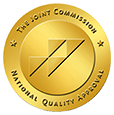Medication-assisted treatment for substance use disorder is often a complex and personal journey.
If you are currently taking methadone as a treatment for opioid addiction, there may be several reasons you want to switch to Suboxone or another form of buprenorphine.
While it may seem easy, switching from methadone to Suboxone is not always seamless. The two drugs are chemically different, so switching medications involves more than a simple taper.
In this blog post, we compare methadone and Suboxone to help you understand the key differences between the two. Continue reading to learn more.
Methadone: The First Opioid Addiction Treatment Medication
Methadone was first introduced as an analgesic– a synthetic alternative initially envisioned and used for pain management. The drug began to gain recognition as an effective opioid misuse remediation tool in the 1950s.
By the early 1970s, primarily facilitated by a federal program that allowed certified treatment clinics to administer methadone, approximately 25,000 people were receiving methadone treatment for opioid addiction in the United States.
Methadone attaches to the brain’s opioid receptors, which inhibits the ability of other opioids (heroin, codeine, oxycodone) to cause a euphoric response. Administration of methadone allows opioid-dependent people to cease opioid use without experiencing severe withdrawal symptoms. For people with opioid dependency, methadone does not cause intoxication.
Because methadone has been used for decades, we have abundant studies and research on long-term treatment and methadone efficacy. It is a highly effective treatment when combined with dedicated addiction intervention.
However, methadone is a Schedule II drug with minor potential addiction and abuse. Because methadone can only be administered by a registered narcotic treatment program as a substance use disorder therapy, the likelihood of illicit use or adverse reactions is relatively low.
Methadone is administered daily and under supervision. It is given as a liquid solution, tablet, or tablet dissolved in a liquid.
Suboxone: A New Generation of Medication-Assisted Recovery
Suboxone has become the most commonly prescribed medication for opioid use disorder treatment, surpassing methadone.
Like methadone, buprenorphine — the active drug in Suboxone — was initially intended to treat pain. As its potential for opioid addiction treatment became recognized, it also became clear that buprenorphine could pose addiction risks. The National Institute on Drug Abuse (NIDA) launched an effort to develop a new drug: one that uses buprenorphine’s ability to mitigate withdrawal symptoms but mutes the euphoric effect. Suboxone was the result.
Suboxone is a targeted opioid use disorder treatment that effectively neutralizes the brain’s opioid receptors and manages withdrawal symptoms. It combines two drugs, buprenorphine and naloxone, simultaneously inhibiting opioid intoxication while minimizing cravings.
Like methadone, Suboxone helps reduce the severity of withdrawal from opioid dependency. Buprenorphine is a partial opioid receptor agonist, and while it can cause a mild euphoric response, its effects are limited because of the interaction with naloxone.
Suboxone has less potential for addiction than methadone. For many, Suboxone might be a more appropriate treatment than methadone.
Methadone vs. Suboxone: Why Are People Switching Treatments?
People switch from methadone to Suboxone for several vital reasons.
One primary motivation to switch is that Suboxone typically causes less sedation, enabling individuals to function better daily. Methadone, in contrast, bears more similarity to opioids and can induce euphoria and cognitive impairment, albeit to a lesser extent than heroin.
Convenience plays a significant role in this shift as well. Methadone treatment demands daily clinic visits over several months, while Suboxone can be prescribed for self-administration. Furthermore, a subdermal time-release version called Sublocade only requires monthly dosing, making it even more convenient.
Another compelling reason to switch is the improved safety profile of Suboxone, associated with fewer side effects, a lower risk of heart damage, and a reduced risk of overdose compared to methadone.
Some people may consider the switch in hopes of avoiding complete methadone withdrawal. Although tapering is still necessary, it is less severe than quitting entirely. Suboxone, while challenging to taper off, is generally safer for long-term use.
Suboxone binds more strongly to opioid receptors than methadone. Therefore, you must partially taper off methadone before starting Suboxone, or you risk withdrawal. You will have to drop your methadone dose to 30mg per day or less before switching to Suboxone, and it’s not a good idea to lower your methadone dosage by more than 5mg per week.
It’s crucial for those contemplating a switch to plan and consult with a healthcare professional to ensure a safe transition.
Remembering that medication is just one part of addiction treatment is vital. Individuals must combine medication with therapy, social support, and healthy lifestyle changes for a comprehensive recovery. By addressing these aspects, individuals can make informed choices to better their chances of a successful recovery from opioid addiction.
Personalized Medication-Assisted Treatment Near Denver
Ultimately, whether methadone or suboxone treatment is best for your needs will depend upon your unique set of circumstances.
While both options offer significant benefits for people struggling with opioid dependency, each medication might have drawbacks in individual cases.
At The Raleigh House, we offer comprehensive substance use disorder treatment programs to address the core factors contributing to addiction. We comprehensively evaluate your substance use and misuse history, co-occurring disorders, family history, medical history, and other factors to determine the most effective treatment plan for your needs.
If you think medication-assisted treatment could help you break free from substance use disorder, please don’t hesitate to contact us.
When you’re ready to heal, we’re ready to help.




